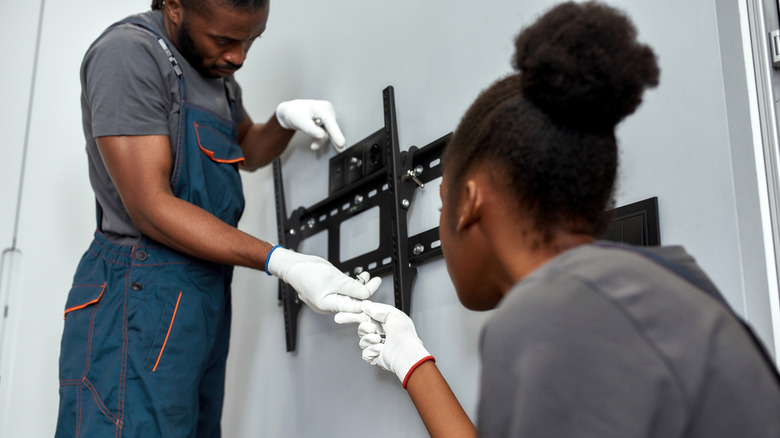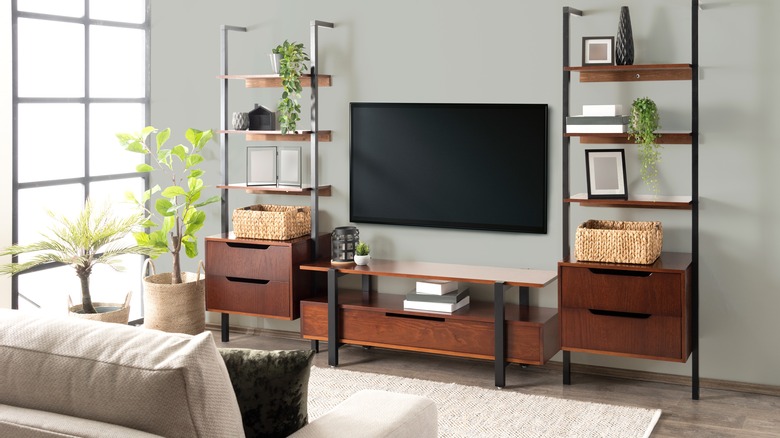Learn The Downsides Of Wall Mounting A TV Before You Try It
Should you mount your TV or display it in an entertainment center? Both options come with several perks. You can decorate a TV stand, use it for storage, and move it to a new location when you want. Mounting your TV takes up less space than an entertainment center and gives your room a sleek, minimalist look. It also keeps kids and pets from tipping the TV but limits your options and locks you into the location once you install the mount.
When you mount your TV directly to the wall, you're choosing a long-term spot that's not easy to change without repairing holes in your wall where the mount was. If you install the holder incorrectly, you could experience more severe wall damage beyond basic holes from the brackets. Once your TV is secured on the mount, there's little room for movement. Some mounts extend and allow you to turn the TV slightly, but there's often a small range of motion to improve the view of the TV.
The installation itself can be challenging with the potential to make massive mistakes when mounting your TV. It needs to be properly anchored into studs, or the TV could fall and cause serious injuries. Getting the placement correct is a factor as well. Placing the TV too high or too low creates uncomfortable viewing angles. Cord management is more challenging when the TV hangs high on the wall without a cabinet beneath it to hide the cables.
Tips for overcoming the drawbacks of mounting a TV
Despite these drawbacks, mounting your TV is still the best option in some cases, especially if you don't have room for a bulky TV stand or are concerned about your TV tipping over. You might also simply prefer the look. There are several things you need to know to wall-mount a TV, which can help you overcome some of the downsides.
Installing the mount properly is essential to keep the TV stable and prevent damage to the wall. Consider potential issues, such as heat and direct sunlight that might affect the TV. Find a location that's close to an outlet to minimize wiring running across the room. You can also hire an electrician to install an outlet behind the TV, which makes it easier to hide the cords. Other ways to hide the cords include running them behind the wall and using cable covers that are painted to match the wall.
If storage is a concern, you can combine a TV stand or other shelving with the mounted style. This option keeps the TV secure on the wall where it won't tip over easily while giving you options for storing other electronic components, games, and other items you want to keep close. Position tall shelves on either side of the TV to get a built-in look, or install wall-mounted shelves for must-have components. This option also lets you decorate a TV stand or shelves to add your personal touch to the area.

